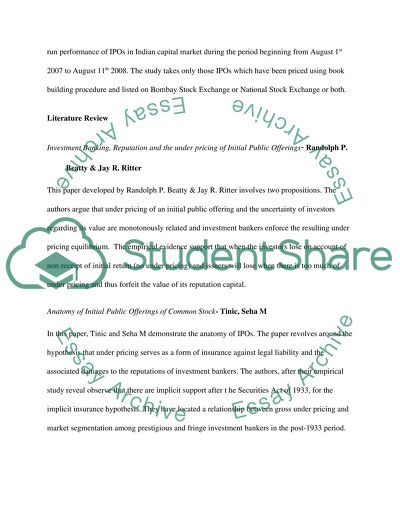Cite this document
(Under Pricing and after Market Performance: Indian Initial Public Research Proposal, n.d.)
Under Pricing and after Market Performance: Indian Initial Public Research Proposal. Retrieved from https://studentshare.org/finance-accounting/1503571-initial-public-offering-ipo
Under Pricing and after Market Performance: Indian Initial Public Research Proposal. Retrieved from https://studentshare.org/finance-accounting/1503571-initial-public-offering-ipo
(Under Pricing and After Market Performance: Indian Initial Public Research Proposal)
Under Pricing and After Market Performance: Indian Initial Public Research Proposal. https://studentshare.org/finance-accounting/1503571-initial-public-offering-ipo.
Under Pricing and After Market Performance: Indian Initial Public Research Proposal. https://studentshare.org/finance-accounting/1503571-initial-public-offering-ipo.
“Under Pricing and After Market Performance: Indian Initial Public Research Proposal”, n.d. https://studentshare.org/finance-accounting/1503571-initial-public-offering-ipo.


